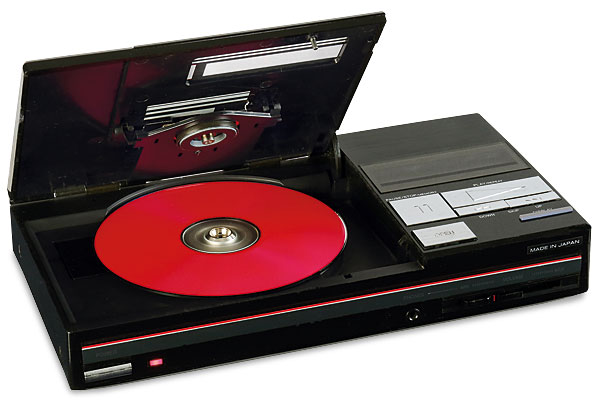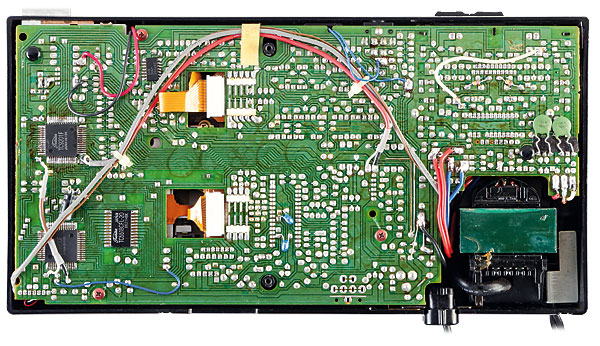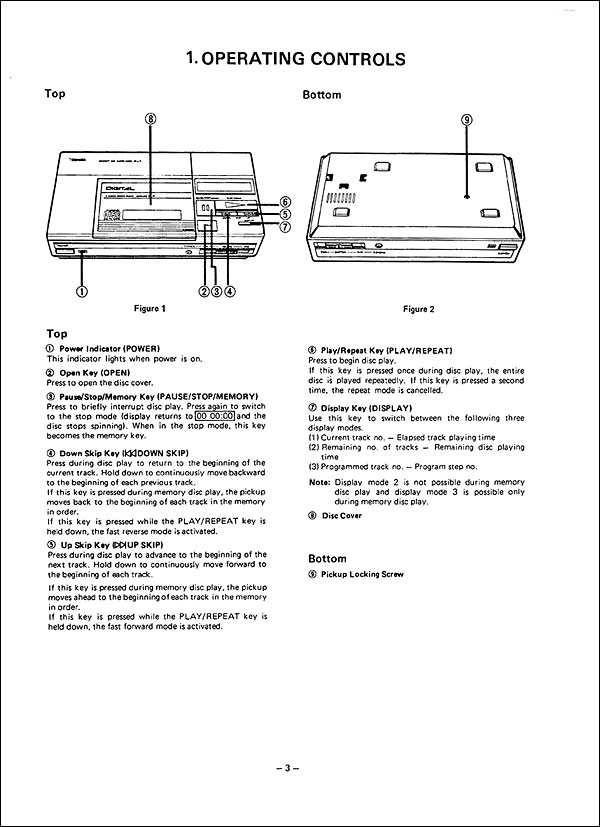Toshiba XR-J9 CD Player Page 2
![]() Tim Listens
Tim Listens
The inner hi-fi snob in me who scrutinises specifications and who looks for sonic superiority in technical performance data (there's a little of that in many of us I'm sure) wasn't expecting much from the XR-J9. Could something so small that only attempts to decipher a portion of the information contained on a disc even be worth listening to? Surprisingly it was.
Perhaps predictably, the little Toshiba player sounds bright and jangly – a bit like a budget turntable before you save up and equip it with a better cartridge. Unlike a turntable, though, the sound of the XR-J9 is rock solid and clean. It has the honest quality of many of the basic Japanese players of its era that weren't burdened with the excessive analogue filtering of their more expensive counterparts. I've observed before that too much of this can rob music of its life and spirit.

Stereo imaging struck me as falsely vivid, a consequence of the steep filters and the shared DAC no doubt. This isn't a problem unique to the XR-J9, of course, and must be accepted as inevitable when this circuit topology is used. Yet despite all these observations I found this machine to be an engaging and entertaining listen. In an odd way it is preferable to a bland-sounding player, which some of the more expensive alternatives of the period were.
The guitar on 'Into Temptation', which appears on the Crowded House compilation Recurring Dream [Capitol 7243 8 38396 2 9], displayed outstanding clarity while the bass sounded both fluid and generous. Yes, the vocals were coarser than they needed to be, but a fine sense of focus was noted. What did sound odd were elements of the percussion, the smaller instruments coming across like gated white noise rather than proper musical sounds. This certainly wasn't obvious at first, but once identified it was very hard to ignore.
Whether this is a genuine effect, or something common to all players only revealed more prominently by this one through a minor quirk of tonal balance, is hard to say. But I've not noticed it before with other equipment. This prompted a listen using a wider range of recordings, which only confirmed that the effect is a key trait of the Toshiba XR-J9. Maracas, snares and cymbals all become processed into a 'psssshhhhh' sound of the same length as the original note. Playing the same material on my reference machine – a Philips CD960 [HFN Jul '20] – showed that the correct sounds were present on the discs. Maybe this is what those other two bits are for?

This may not appear to be a player for serious listening, but in some ways I found orchestral works to be more convincingly reproduced by the tiny Toshiba. The strings of the Wiener Symphoniker may have sounded a little wiry while Bach's Concertos For Violin, Strings And Continuo [Deutsche Grammophon 419 855-2] played through the speakers, but otherwise this was very much a 'front row' performance.
Rich Pickings
The absence of any audible muddle left a good sense of space around each note, and even though I've heard other machines render the exact texture of the bow across the strings with greater depth, this was still a highly enjoyable musical experience. For best results I'd recommend matching the player with loudspeakers that are naturally rich sounding and not too bright. If your system sounds a bit soft with a conventional CD player then this may well be the answer.
The small size of the XR-J9 makes it look like an ideal companion for Toshiba's Aurex micro systems but I don't think the quality is quite there for that. The System 15, in particular, was an exceptional piece of equipment that demands the very best of sources – really, something like the original top-loading Marantz CD-63 (not the '90s player with the same name) should be considered the starting point in this regard.

That is not to say that the XR-J9 isn't worth owning; it may be a bit rough around the edges but it's still a good listen when enjoyed as a minimalist approach to how CDs can be played. Was it good value at the time? Certainly, but some dealers offered the sophisticated Philips CD160, which was essentially the same machine as the Philips CD450 [HFN Aug '14], with its dual 16-bit DACs and 4x oversampling digital filter, for just £20 more. That was only a couple of discs and a drink back then. Decisions, decisions...
Buying Secondhand
Finding an XR-J9 isn't difficult but locating a clean and tidy example is trickier. A survey of what was on the market at the time of writing revealed many scruffy examples, although it is to the designer's credit that nearly all were still said to be fully functional. When faults do occur repairs can be tricky, not least because it is not possible to access the component side of the circuitboard without disconnecting the optical unit, meaning, of course, than the player cannot be operated.


Brownie Points
To mitigate this, Toshiba's service information is excellent and the player includes sensibly located test points that can be reached when the unit is still in an operable state. The LCD unit can also fail, the symptoms being dark coloured blotches that spread inwards from the corners or segments that are missing entirely. Replacements are not available, so this is an important thing to look out for if you are hoping to find a really top class example of the player.
Similar comments apply to the Toshiba XR-P9, which if you are lucky will come with a neat infra-red remote control handset. This works in conjunction with a little sensor unit that plugs into the back of the player, so make sure that this is present before you buy.
Hi-Fi News Verdict
Toshiba's first really popular CD player is a quirky little machine, and in more ways than one. Honest sounding and practically designed, it demonstrates the minimum amount of technology required to usefully pull music from a CD. Married with a pair of rich-sounding loudspeakers or used in a system that could do with a little more bite, it could be the ideal machine for many – as it was when it was first released.
























































